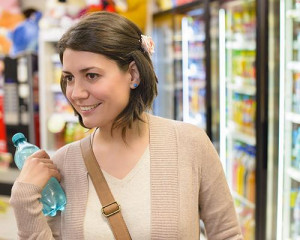Packaged beverage options are exploding: 4 tips for boosting offerings and efficiencies in-store
From new ready-to-drink (RTD) coffees to infused teas to sparkling waters, packaged beverage options are at an all-time high, driven by innovation and consumer demand for variety.

Beverage manufacturers recognize that having diversity in their offering is critical and the same is true for convenience store operators, who want to keep customers coming back for more.
“Culturally, we’ve become so accustomed to having more choices than ever and from a consumer’s standpoint, beverages are low investment, low commitment,” explained Satoru Wakeshima, chief engagement officer at New York-based branding agency CBX. “It’s not a major decision and people like to try new things.”
Wakeshima predicts 2019 will see more of the rising beverage trends and new product explosion seen in 2017 and 2018, but with greater blurring of product types — more hybrids.
“Our expectations are higher than ever, and the bar continues to rise,” he said.
How can convenience store operators manage the packaged beverages category in a way that capitalizes on new and emerging opportunities, but maintains efficiency?
Beverage experts, offer the following tips:
1. Allocate intelligently
Because the category cannot expand infinitely, especially within the limited confines of the convenience store format, space needs to be allocated intelligently, which includes scaling back in some areas. It’s a simple concept that is not always executed.
“Reducing space for declining or slow-moving segments to make room for innovative or higher-velocity segments that attract shoppers to the store is the key to success,” says Peter Keaney, business analyst at Cadent Consulting Group. An example would be to reduce space for milk, where sales have been declining, to make space for more sparkling waters.
2. Rotate offerings with marketing support
“People want to discover new beverages, but they also want to be reassured that they’re making a good choice,” said Wakeshima. “Educating customers at retail, mobile or online to aid the deselection process becomes the expectation.”
3. Think like consumers
Thinking like consumers means in terms of “need states” rather than subcategories, as this is how consumers shop, according to Keaney. Moving forward, the plethora of packaged beverage options could be rearranged in the cooler by needs.
The NPD Group has identified four macro consumer needs: fueling, wellness, connecting and gratifying.
The NPD Group has identified four macro consumer needs: fueling, wellness, connecting and gratifying. These fundamental needs can then be broken down into more specific behaviors, known as need states. Examples of need states under fueling include "easy on-the-go" and "staying awake." Meanwhile, need states under gratifying include "nostalgic drinks" and "morning drink favorites.”
4. Keep abreast of beverage trends
In addition to staying on top of the latest packaged beverage trends, retailers also should watch what’s trending outside the category, since trends often spill from one category into another eventually.
The fastest-growing packaged beverage segments currently are sparkling water, energy drinks and RTD coffee, all which are up by double-digits recently, according to Keaney.
Still and sparkling water continue to be big as consumers seek alternatives to carbonated soft drinks, he added. “In addition, plant-based and probiotic beverages are driving sales, as well as functional beverages and innovations like nitro cold brewed coffee. We’ll have to see how high CBD-infused beverages can fly.”
Originally published at Convenience Store News.

